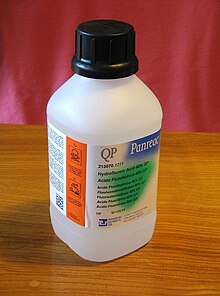
In the face of growing environmental concerns, PCB manufacturers are increasingly turning to sustainable practices to reduce their ecological footprint. By adopting eco-friendly etching machines and processes, manufacturers not only contribute to environmental conservation but also improve operational efficiency and comply with global standards.
By embracing these sustainable practices in PCB wet processing, manufacturers can not only improve their environmental footprint but also achieve cost savings, enhance operational efficiency, and comply with industry standards. As the demand for eco-friendly manufacturing practices continues to grow, adopting green technologies in PCB production will be critical for staying competitive in the global market.
Reducing Environmental Impact of Etchants

Etching processes in PCB manufacturing traditionally use hazardous chemicals that pose a significant environmental risk. The growing emphasis on sustainability has led to innovations in eco-friendly etchant solutions that reduce the use of toxic substances and lower the overall environmental impact.
Transition to Chelator-Free Chemistry
A major development in sustainable PCB manufacturing is the transition to chelator-free chemistry. Traditional etchants often contain chelating agents, which can be harmful to aquatic ecosystems. Chelator-free etchants, on the other hand, eliminate the need for these harmful chemicals while still achieving effective etching results. This transition reduces chemical waste and simplifies the waste disposal process.
Biodegradable Etchant Solutions
Another key trend in sustainable PCB manufacturing is the use of biodegradable etchant solutions. These eco-friendly alternatives decompose naturally, minimizing their environmental impact when they enter the waste stream. By choosing biodegradable etchants, manufacturers help mitigate the long-term environmental effects of PCB production.
Energy-Efficient Equipment Design
Energy consumption is a significant factor in the overall environmental impact of PCB manufacturing. To address this, many manufacturers are adopting energy-efficient equipment designs. These designs optimize power usage during the etching process, reducing carbon emissions and cutting down on operational costs.

Heat Recovery Systems in Etching Tanks
Heat recovery systems are increasingly being integrated into etching tanks. These systems capture waste heat generated during the etching process and repurpose it to preheat incoming solutions or maintain optimal temperatures in other parts of the production line. This not only reduces energy consumption but also enhances process efficiency.
Solar-Powered Waste Treatment
Some PCB manufacturers are taking their sustainability efforts a step further by incorporating solar-powered waste treatment systems. Solar panels can power the equipment used for treating and neutralizing etchants, reducing reliance on non-renewable energy sources and cutting down on greenhouse gas emissions.
Recycling and Closed-Loop Systems
Closed-loop systems and recycling initiatives are at the heart of sustainable PCB manufacturing. By reusing chemicals and water, manufacturers can significantly reduce waste and lower the consumption of raw materials.

Copper Recovery from Spent Etchants
In high-volume PCB production, spent etchant solutions often contain valuable metals like copper. Through specialized copper recovery systems, manufacturers can extract copper from these spent solutions and reuse it in the production process. This practice not only reduces waste but also contributes to resource conservation by minimizing the need for fresh copper.
| Process | Benefits |
|---|---|
| Copper Recovery | Reduces raw material consumption, saves costs |
| Closed-Loop System | Minimizes waste and lowers chemical disposal costs |
| Chemical Reuse | Reduces chemical usage and environmental impact |
Water Reuse in Rinsing Stages
Water usage in the rinsing stages of PCB manufacturing can be a significant source of waste. To reduce water consumption, many facilities now implement water reuse systems. These systems capture and purify water used in rinsing stages, allowing it to be reused in subsequent production cycles. This reduces water waste and helps conserve this precious resource.
Certifications and Compliance
Compliance with international environmental standards is essential for PCB manufacturers aiming to improve their sustainability. Adhering to standards like RoHS, WEEE, and ISO 14001 demonstrates a commitment to reducing environmental impact and maintaining high industry standards.
Meeting RoHS, WEEE, and ISO 14001 Standards
- RoHS (Restriction of Hazardous Substances): Ensures that PCBs are free of harmful materials like lead, mercury, and cadmium.
- WEEE (Waste Electrical and Electronic Equipment): Mandates responsible recycling and disposal of electronic waste, ensuring that PCB manufacturers minimize their environmental footprint.
- ISO 14001: Certifies that a manufacturer’s environmental management system (EMS) meets international standards for reducing pollution and improving sustainability practices.
Manufacturers committed to sustainability often seek these certifications to improve their marketability and appeal to eco-conscious consumers.
Case Study: Zero-Liquid-Discharge (ZLD) Facilities
A compelling example of sustainable PCB manufacturing can be seen in Zero-Liquid-Discharge (ZLD) facilities. ZLD systems completely eliminate liquid waste by recovering and reusing 100% of water and chemicals in the production process. One facility, located in Germany, implemented a ZLD system that successfully reused all its water and etching chemicals, dramatically reducing its environmental impact. This system not only reduced waste but also helped the company achieve a significant reduction in operational costs.
For further details on ZLD systems, visit Zero-Liquid-Discharge Solutions.
Achieving 95% Water Recycling in PCB Production
Another example of sustainable innovation in PCB manufacturing is the achievement of 95% water recycling in the production process. By employing advanced filtration and reverse osmosis technologies, some manufacturers are able to recycle the vast majority of water used in their etching processes. This minimizes the need for fresh water and helps reduce the overall environmental impact of PCB production.
